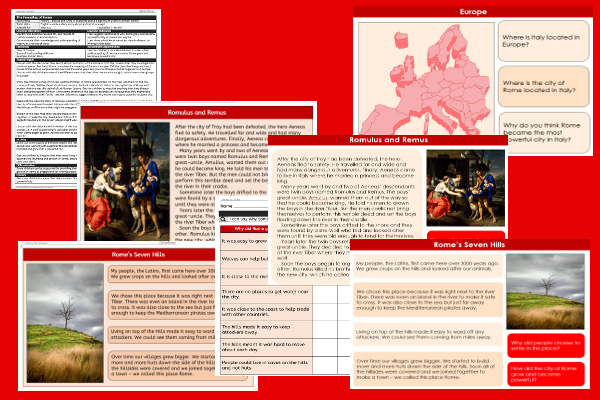Lesson Two – Founding of Rome

This history teaching pack for Key Stage Two gets the children to explore and write in character to describe a significant event in Roman history including the story of Romulus and Remus about the city of Rome.
The class can identify and suggest some of the reasons as to why Rome grew and became a powerful city as the hub of the Roman empire in the past.
Download this teaching pack including a lesson plan, classroom activities and an interactive presentation to explore and write in character to describe a significant event in Roman history including the story of Romulus and Remus about the city of Rome
Activities in this teaching pack include shared reading texts to identify reasons for the growth of Rome as a powerful city based on a Roman legend about how the city was founded and its location surrounded by hills and a worksheet to select and record reasons for the growth of Rome as a powerful city by identifying true and false facts about its growth in the past.
The interactive presentation gets the children to explore how to write in character about a significant event in Roman history including the story of Romulus and Remus.
This lesson is part of a history scheme of work to get the children to investigate some of the reasons for the growth of the Roman Empire in the past and why the Romans invaded ancient Britain. There are teaching activities for shared learning, differentiated worksheets to support independent learning and interactive presentations to introduce concepts and key skills.
-

Theme Park Visit
Practise identifying and calculating the timing and duration of rides and events when visiting a theme park on a special family trip
-

Family Holiday Trips
Identify and record how to compose and publish recounts using adverbials of time and place to describe family holidays to different places in the world
-

Money Multiplication
Explain and model how to use standard written calculation methods to multiply money amounts in pounds and pence when solving number problems
-

Sport Teams
Explain and model how to use brackets and dashes to add extra information to sentences describing how to play sports and games as part of a team
